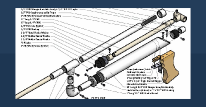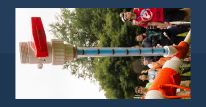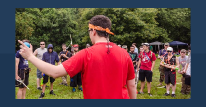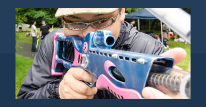Hello everyone,
I'm not the most advanced modder so to speak yet I do take a strong interest in looking around the forums and modding my own guns to my ability. Recently my friends and I have been debating on what color to paint our longshot and with what paint? The popular decision is to go with classic only spray paint methods. I on the other hand find it to plain and fancy the hand painting worn out look (similar to dry brush). It's hard to explain the exact look I'm describing but if any of you are familiar with DirectThreat's work he is a good example of the work I've been describing. Now I have done dry brushing before and spray painting and a few decals with the old games workshop paint and was wondering if there are any guides/videos on how to attain this style and if the new citadel paint on games workshop would be useful. Any feedback would be helpful! Thanks in advance.

End all be all Hand Painting Guide?
Is there a guide out there or is it just common knowledge?
Started by NerfBounty, Oct 03 2012 06:31 PM
6 replies to this topic
#1

Posted 03 October 2012 - 06:31 PM
"If you're not against the system, you are the system." -That 70's Show
#3

Posted 03 October 2012 - 07:47 PM
Although that is cool, it is not the type of paint job I was describing (which is my fault for being too loose in the description). I was referring more to:


"If you're not against the system, you are the system." -That 70's Show
#4

Posted 03 October 2012 - 07:59 PM
If you can do this:

You can easilly do this:

Maybe you should look at a model forum, or a LARP forum. They will most likely give you better instructions on how to do the stuff that you want to do.

You can easilly do this:

Maybe you should look at a model forum, or a LARP forum. They will most likely give you better instructions on how to do the stuff that you want to do.
#5

Posted 03 October 2012 - 08:02 PM
Thanks for the advice Exo I'll certainly take it!
"If you're not against the system, you are the system." -That 70's Show
#6

Posted 03 October 2012 - 08:17 PM
Just a little bit of overview:
1: You are only as good as your tools. Get good brushes, seriously, and buy decent-quality paint. Citadel is standard because of all the Warhams people out there, but Tamiya and Privateer both make great paints.
2: THIN YOUR PAINTS. I cannot stress this enough. Nerf blasters consist of lots of flat panels, which show brush strokes like crazy. Multiple thin layers will look at lot better than a single thick layer.
3: Learn to drybrush. This is a simple technique that will give you a weathered look with next to no effort. Apply paint to your brush, then wipe said brush across a disposable medium (paper towels work well here) until there is extremely little paint left. Then, using the tip of the brush only, paint over the area with quick, wide strokes. The paint will stick to raised edges and apply an uneven, weathered coat. This is also excellent for metallic paints in general.
4: Sand and prime. Black primer provides easy shading, but can muddy colors. White primer allows for bright, vivid colors but shows mistakes like crazy.
5: Keep the highlighting and shading minimal. You're not painting a 1" tall army guy that needs to be seen from a distance of 3" or so. There will be plenty of light to provide natural highlights, so use a restrained hand.
6: As with all paint jobs, you're going to want to clear coat to preserve the work. So do so.
That's just general advice, but it should get you started.
1: You are only as good as your tools. Get good brushes, seriously, and buy decent-quality paint. Citadel is standard because of all the Warhams people out there, but Tamiya and Privateer both make great paints.
2: THIN YOUR PAINTS. I cannot stress this enough. Nerf blasters consist of lots of flat panels, which show brush strokes like crazy. Multiple thin layers will look at lot better than a single thick layer.
3: Learn to drybrush. This is a simple technique that will give you a weathered look with next to no effort. Apply paint to your brush, then wipe said brush across a disposable medium (paper towels work well here) until there is extremely little paint left. Then, using the tip of the brush only, paint over the area with quick, wide strokes. The paint will stick to raised edges and apply an uneven, weathered coat. This is also excellent for metallic paints in general.
4: Sand and prime. Black primer provides easy shading, but can muddy colors. White primer allows for bright, vivid colors but shows mistakes like crazy.
5: Keep the highlighting and shading minimal. You're not painting a 1" tall army guy that needs to be seen from a distance of 3" or so. There will be plenty of light to provide natural highlights, so use a restrained hand.
6: As with all paint jobs, you're going to want to clear coat to preserve the work. So do so.
That's just general advice, but it should get you started.
#7

Posted 04 October 2012 - 03:29 AM
If you'd searched, you would have found my thread. Click the link in my signature.
1 user(s) are reading this topic
0 members, 1 guests, 0 anonymous users













